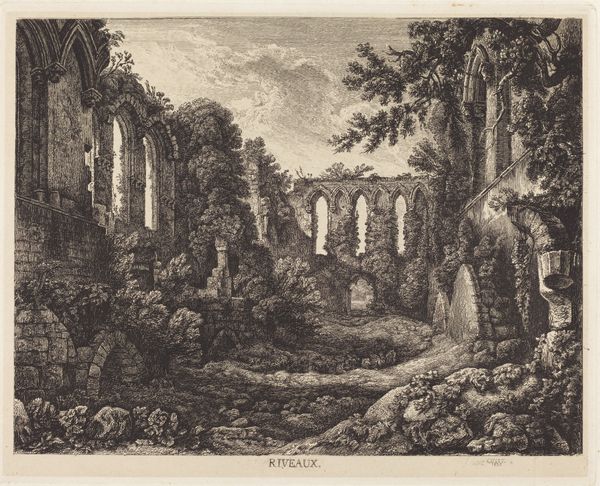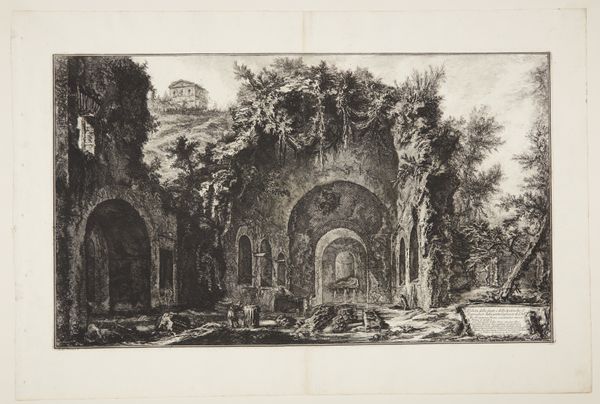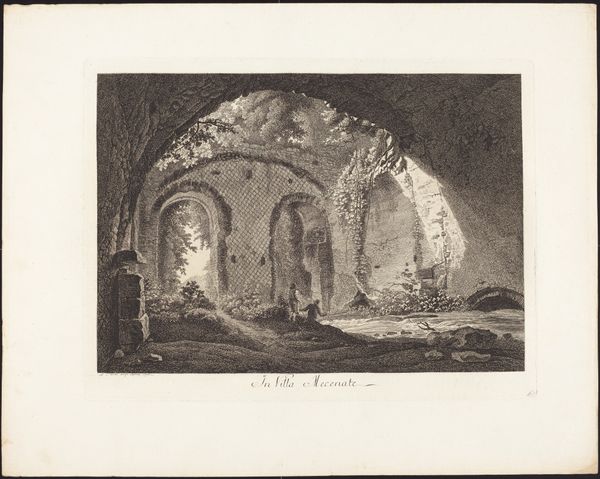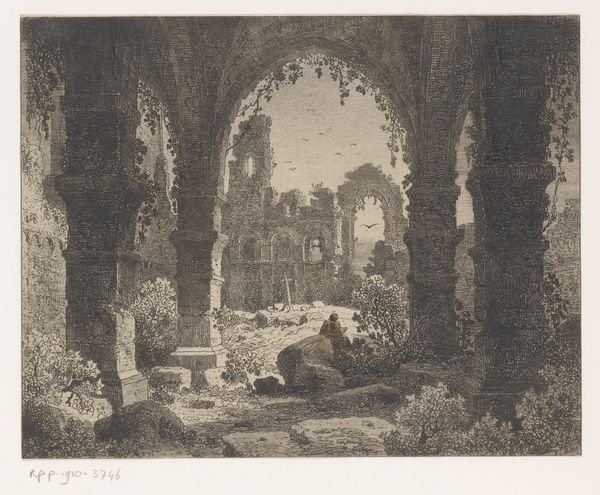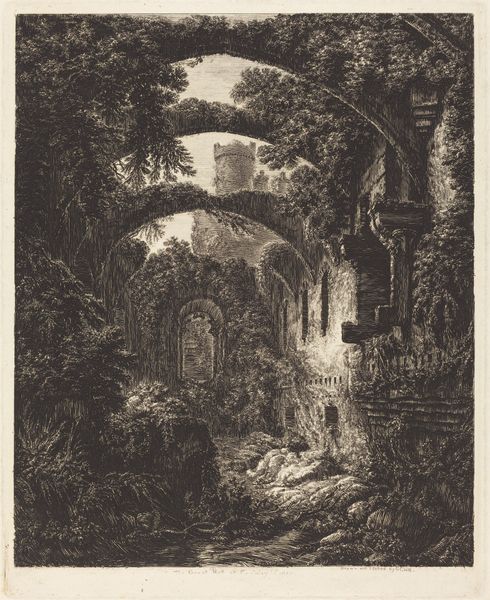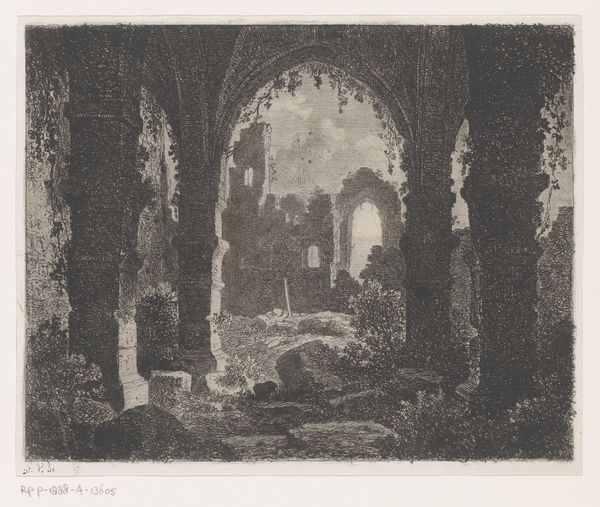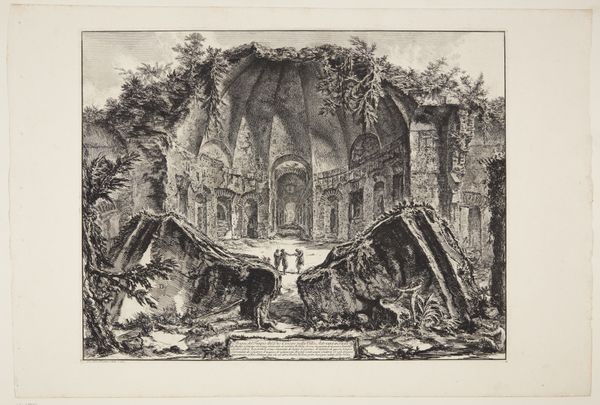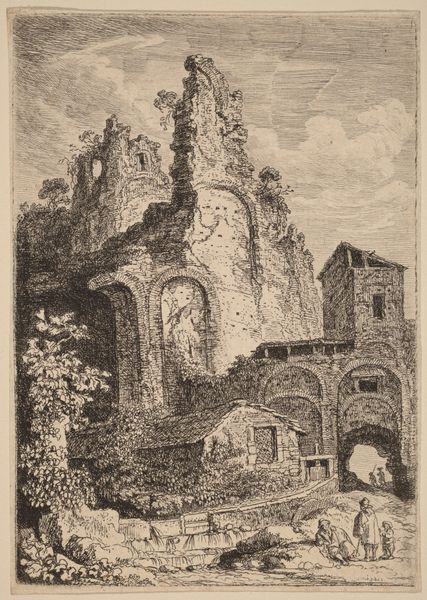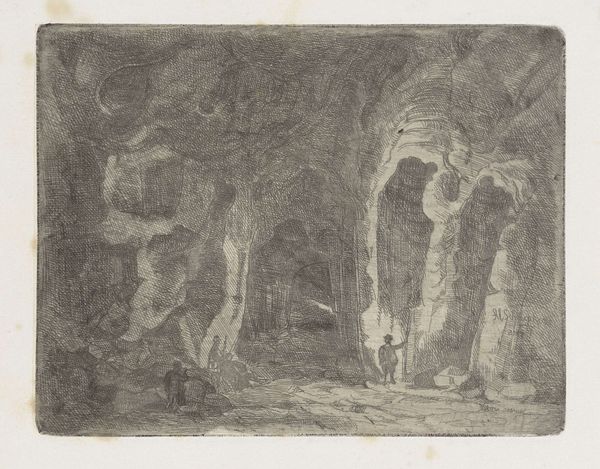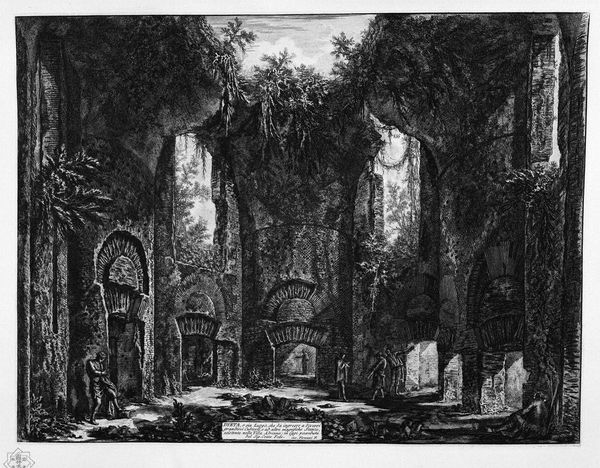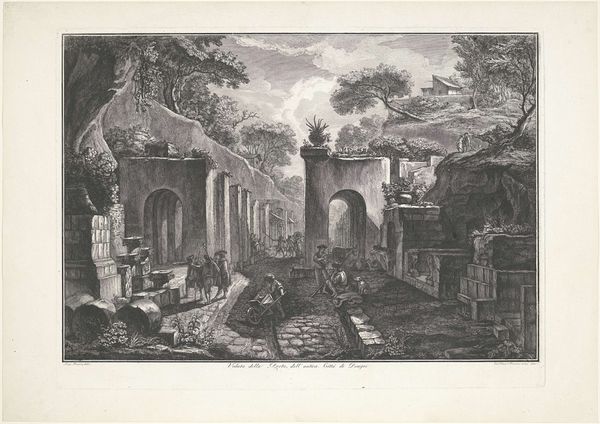
View of the so-called Accademia at Hadrian's Villa, Tivoli 1777
0:00
0:00
print, engraving
#
neoclacissism
# print
#
landscape
#
ancient-mediterranean
#
engraving
Dimensions: 445 mm (height) x 580 mm (width) (plademaal)
Curator: Let’s take a closer look at Giovanni Battista Piranesi’s "View of the so-called Accademia at Hadrian's Villa, Tivoli" from 1777. It’s an engraving currently held at the SMK, Statens Museum for Kunst. Editor: Immediately, the interplay of decay and persistence grabs me. There’s something potent in seeing nature reclaim what was once structured and purposeful. The shadows hint at deeper, untold stories held within those stone arches. Curator: Indeed. Piranesi was fascinated by the weight of history and the slow but inexorable crumbling of empires. Hadrian's Villa, even in its ruined state, became a canvas for contemplating power dynamics and the transience of human ambition. The crumbling academy embodies that tension. Editor: Absolutely. The deliberate use of scale –notice the small figures juxtaposed with the colossal architecture – amplifies a sense of insignificance and also of curiosity. These individuals become stand-ins for us, prompting reflection on the cyclical nature of time. We look for clues about them within the architecture. Curator: Consider also that Piranesi created these views during a time when the grand tour was flourishing. Many were seeking direct access to the art of antiquity. By making etchings such as this, Piranesi ensured that ancient spaces, like Hadrian's Villa, were available for broader consumption – a democratizing force, albeit with colonial undertones considering its connection to wealthy elites. Editor: Interesting! This piece also resonates symbolically in unexpected ways. Ruin can symbolize oppression, such as colonialism and the enslavement that supported it. We read it simultaneously in a way that acknowledges and reflects on our complicity as observers across historical time and political positions. Curator: Yes. What began as a fascination with Neoclassical ideals transforms into a broader critical lens examining how empires rise and fall, and who bears the consequences of that power. It reflects a larger discourse present since the 18th-century Enlightenment itself! Editor: It seems like this single image invites endless possibilities for contemplating themes of decline, reclamation, and ultimately, a profound engagement with enduring power structures. Curator: Ultimately, this image stands as an intersection, a pivotal example that merges aesthetics and cultural critique.
Comments
No comments
Be the first to comment and join the conversation on the ultimate creative platform.
